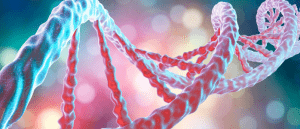
BioTechniques News
Aisha Al-Janabi

Blocking a certain type of ion channel has been shown to prolong survival in mouse models of severe Duchenne muscular dystrophy (DMD), which could lead to the development of novel treatments in humans.
Researchers at the Johns Hopkins University School of Medicine (MD, USA), led by senior author David Kass, have demonstrated that pharmacologically blocking the ion channel transient receptor potential canonical 6 (TRPC6) reduces symptom severity in mice that are genetically modified to have DMD.
DMD is a genetic disorder that progressively weakens heart and skeletal muscle. It currently lacks an effective, widespread treatment, although each year 20,000 children are diagnosed with the genetic disease. It is caused by genetic mutations that decrease dystrophin, a vital anchoring protein involved in connecting muscle cells to extracellular molecules and proteins. Dystrophin is part of a complex responsible for maintaining muscle strength and protection.
The dystrophin gene occurs in the X chromosome, so DMD mainly occurs in boys, although girls can be affected by DMD but only if both X chromosomes are affected. Muscular weakness and wasting begin between the ages of two and four and life expectancy for an individual with DMD is around the early 30s.
There is currently no cure for DMD, although gene therapies are being developed. The only treatments available are palliative therapies. Therefore, the need to develop new, accessible treatments is evident. To embark on this, the current study turned its attention to the TRPC6 ion channel.
 Identifying the molecular cause of rare genetic disorders
Identifying the molecular cause of rare genetic disorders
We spoke with Claudia Gonzaga-Jauregui about her research into the molecular diagnosis of rare genetic disorders using genome sequencing and family-based analyses.
Ion channels are proteins embedded in the outer cell membrane that monitor the influx and efflux of ions, such as calcium or sodium. TRPC6 is an ion channel, activated via mechanical forces or stress hormones, that primarily allows calcium into the cell. It has been implicated in allowing for the abnormal entry of calcium into muscle cells lacking dystrophin, often resulting in cell damage and death.
The research team used 2-month-old mouse models of DMD that mimicked the human disease’s severity to demonstrate the effects of the TRPC6 inhibitor, BI 749327, versus a placebo. Importantly, BI 749327 can be administered orally as well as via injection.
The team then assessed muscular function, bone formation and mobility using a grip strength test, echocardiography, micro-computerized tomography of mouse femurs and an open field mobility test. They also conducted tissue collection and histology following the termination of the experiment.
The study found that blocking TRPC6 in mice with DMD doubled their lifespan and improved muscle function, both skeletal and cardiac. They also saw a reduction in bone deformities, due to muscle weakness, after blocking this particular type of ion channel.
“We believe this may be one of the first studies to prolong survival in this very severe model of Duchenne with a compound that can be administered orally. While the molecule does not restore dystrophin, it blocks abnormal behavior of another protein that is caused by the lack of dystrophin,” reported Kass. “This is not a cure for Duchenne, but if human trials replicate these findings, it could mean patients may survive into their late 40’s and 50’s with the possibility for an improved quality of life.”
The post Blocking TRPC6 could lead to novel Duchenne muscular dystrophy treatment appeared first on BioTechniques.
Full BioTechniques Article here
Powered by WPeMatico
